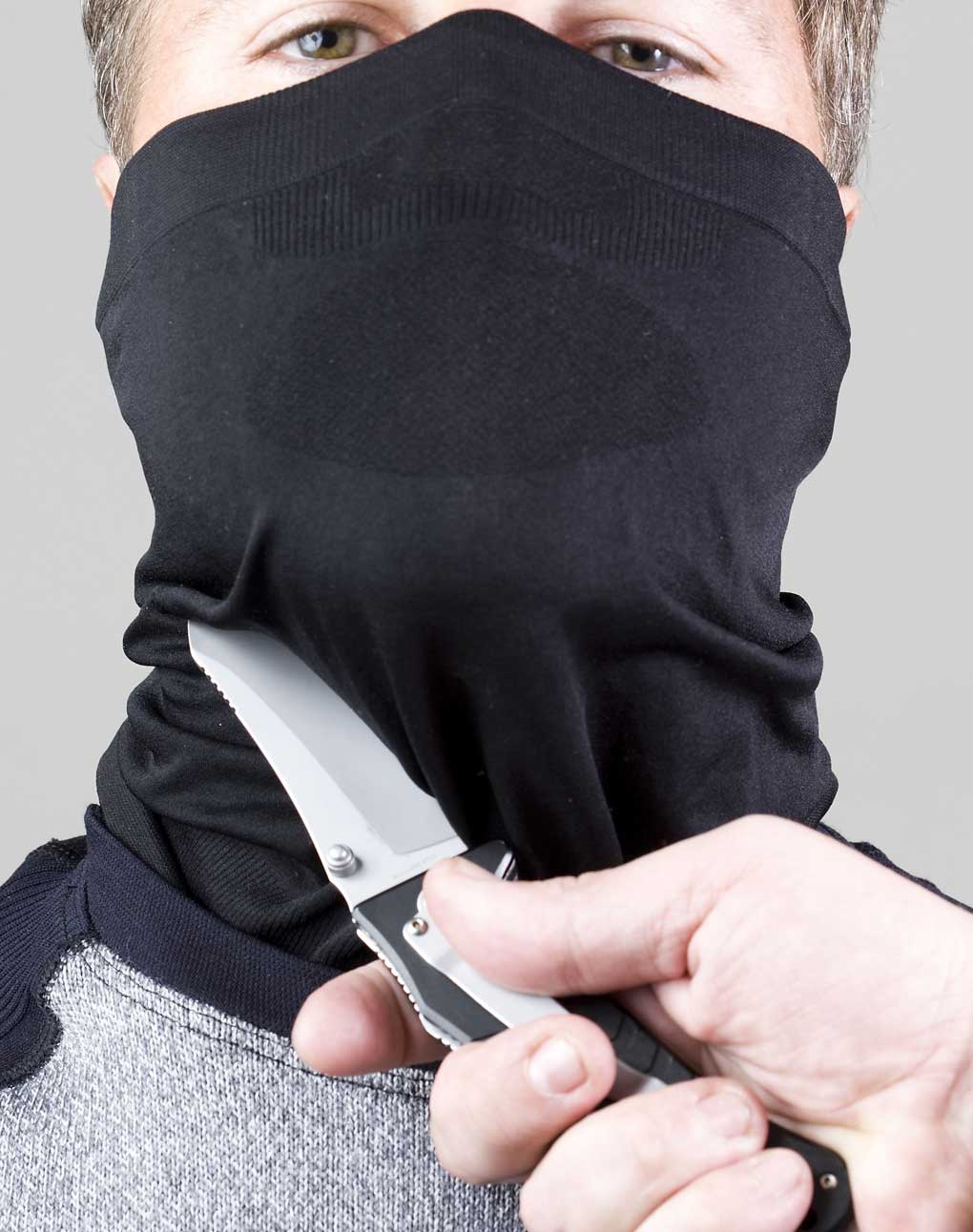Is it better to buy a cut-resistant t-shirt or a stab proof vest?
The Quality co.you don’t know how many times during the week we hear this question “Is it better to buy a cut-resistant t-shirt or a stab proof vest?”, and although, the answer may seem obvious, in this small article we want to show that there are many factors to analyze than just the protection and the different laboratory certificates that these two products can have.
But first of all, it is important to describe what types of elements we are talking about:
A knife attack resistant vest, as its name indicates, is a vest that protects against attacks with sharp elements, these can be weapons, needles, punches or similar.
Normally this type of protective vests have an internal polyethylene pattern that gives a more rigid structure in addition to the protection, but additionally has aluminum plates located on the front, back and sides of the body, these are reinforcement to the plastic structure and they are located to protect the areas where an injury with a knife or any other puncturing weapon could be lethal. For this type of protective complement, there are different types of certifications, but one of the best known is the NIJ 0115.00 standard that establishes a protection between 7 and 20mm of penetration according to the force applied and the indicated blade. In the case of our MTP-CAP and MTP-CAPV vests, both tested by AITEX laboratories in Spain, they comply with level 1 of protection (Level 1 24J). This type of vests is widely used by private security guards, prison officers or people seeking light and efficient protection.

A cut-resistant t-shirt is a lighter and comfortable protection element, as well as useful to be wearing with plainclothes, appearing to be a garment of daily use. The slash resistant t-shirt protects mainly against sharp elements (slashes or cuts). Its resistance to stabbing or puncture attacks is very low and does not reach the level of protection in this category. However, this type of protective garments are certified in the EN388: 2016 standard that establishes 5 levels of protection depending on the cutting cycles. All MTP anti-cut products (thermal protective necks, tactical gloves, sweatshirts, and T-shirts) are strategically covered with X-protection anti-cut mesh, certified as level 5, but according to laboratory tests, it is 5 times higher than level 5. The 3 references of t-shirts MTP-CML (long sleeve with protection in sleeves and torso) MTP-CAMC (short sleeve) and MTP-CBCH (long sleeve only with protection in sleeves and special to use under a ballistic vest or anti-puncture) are garments that fit perfectly to the body. the first layer is made of Coolmax Fresh a sports fabric, which evacuates sweat and keeps the body cool both in winter and summer. In addition to the cut protection, the MTP anti-cut inner fabric protects against tearing and friction.
But then, which of these two elements is better?

Normally in any type of confrontation with a knife, there is movement (except back attacks or unforeseen). This means that the chances of receiving a cut are much higher than those of receiving a stabbing, especially in the arms that instinctively are our natural shield and we use them to defend ourselves when we are in a dangerous situation.
That means that neither of the two elements by itself is a complete guarantee of protection against attacks with knives. The ideal would be to use an anti-punch or ballistic vest and a shirt with cut protection on the sleeves, to protect the arms, which are the most exposed areas. But this, as I mentioned, is a complete protection, which maybe it is not necessary to carry at all time.
To feel more comfortable, with a good level of protection, during regular activities such as to practice sports we recommend just wear a shirt, either long-sleeved for winter or short-sleeved for summer.
The anti-knife vest is more successful in static activities, such as controls and general security services, ideal for professionals who have to ensure the safety of others and that their work exposes them to different levels of danger.
Our recommendation as experts in the sale of police, military and tactical material is to have both elements. In the absence of an inner shirt that protects from cuts as well as stabs or bullets in the market, the ideal is to have elements which complement among themselves and depending on the emergency or the situation in which you find yourself, you can use one or the other.
Safety is a concept, and feeling safe depends on our involvement in the risks, from our point of view, passive safety, the philosophy that we follow for the design of each of our protection elements, the best way to be prepared to face the unexpected.
